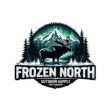
How to Scout for Deer in Northern Alberta
Scouting is the foundation of every successful deer hunt, especially in the wilds of Northern Alberta. From thick boreal forests to open meadows, understanding deer habits and the lay of the land gives you a real edge when the season opens. Whether you’re a new hunter or a seasoned pro, here’s how to make your scouting count:
- Start Early and Be Consistent
Begin scouting well before the season—late spring through early fall is best. The more time you spend in your hunting area, the more you’ll learn about deer routines, bedding spots, and feeding patterns. Consistency is key: visit at different times of day to see how deer move as light and weather change. - Read the Signs
Look for tracks, droppings, rubs (where bucks scrape their antlers on trees), scrapes on the ground, and established trails. Fresh sign tells you deer are active nearby. Bedding areas—flattened grass or leaves under cover—are gold mines for understanding where deer rest during the day. - Use Trail Cameras Wisely
Place trail cameras along game trails, near water sources, and at feeding sites. Check your cameras regularly but minimize disturbance—swap memory cards quickly and avoid leaving scent behind. Over time, you’ll build a picture of which deer are moving through, and when. - Glass from a Distance
Use binoculars or a spotting scope to observe clearings, meadows, and field edges at dawn and dusk. Watching from afar keeps your presence and scent away from core deer areas and lets you spot patterns without spooking your quarry. - Map Out Travel Corridors
Deer love natural funnels like creek beds, ridges, and narrow strips of timber connecting bedding and feeding areas. These corridors concentrate movement and are prime spots for stand or blind placement. - Take Notes and Track Patterns
Keep a scouting journal or use a mapping app to log sightings, sign, and camera data. Mark hotspots, wind direction, and weather for each visit. Over the years, your notes will reveal reliable patterns and help you adapt to changing conditions. - Respect the Land and Wildlife
Always get permission before scouting on private land. Walk lightly, avoid trampling bedding areas, and leave gates as you found them. Responsible scouting builds good relationships and preserves hunting opportunities for everyone.
Pro Tip:
Bring a friend or family member along. Not only does it make scouting safer and more fun, but two sets of eyes spot more sign and you can share the excitement of discovery.
Scouting isn’t just about finding deer—it’s about connecting with the land, reading the subtle signs of wildlife, and preparing for a safe, ethical, and successful hunt. The more effort you invest now, the more rewarding your season will be.
